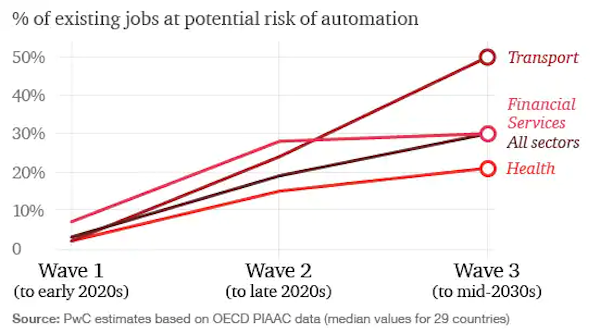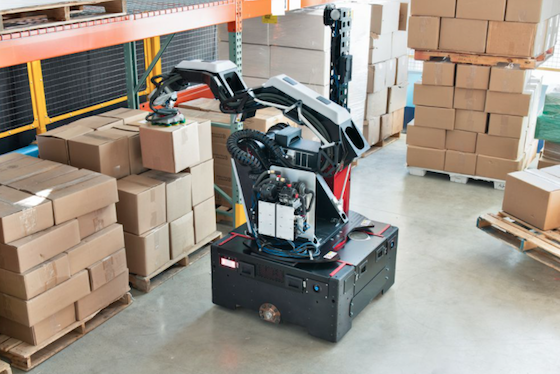The year-long Wuhan virus outbreak has been devastating for many economic sectors, but automation has come out a winner because when workers are forced by government into home imprisonment, smart machines can step in to replace the humans. Plus, business owners have developed a larger appreciation of the convenience and dependability of modern robot substitutes.
Below is an NBC report from a few weeks back that includes the new Boston Dynamics robot Stretch, designed for use in a warehouse setting or wherever basic unloading behavior is needed.
Moving boxes around would once have been a perfect job for low-education foreign workers, but now robots can do the task 24/7 with no lunch breaks or paychecks required. There are millions more jobs of all sorts that will be automated in coming years.

So first-world economies won’t be needing any more immigrants with third-world skills because automation is coming on like gangbusters in the near future.
Manufacturers embrace robots, the perfect pandemic worker, NBC News, April 8, 2021
After social distancing measures forced layoffs in labor-intensive factories, manufacturers turned to automation, despite the high cost. Now, they aren’t going back.
Boston Dynamics’ new “Stretch” robot can lift up to 50 pounds at a time and move up to 800 boxes an hour. The company said the pandemic highlighted the growing need for warehouse labor that humans alone can’t provide.Automation and digitization were already spreading to more factory floors and job sites. Then the pandemic hit.
“It was trial by fire as we went through Covid,” said Mark Bulanda, executive president of automation solutions for Emerson, a manufacturer of systems that automate factory processes.
“Not because of Covid, but because the exodus of people forced the adoption of tech.”
The latest jobs report shows the manufacturing sector grew at its fastest level since the pandemic began, jumping by 50,000 positions. However, there are still about half a million fewer employed manufacturing workers than there were a year ago. The question is how many of those jobs will come back — and how many have been permanently disrupted by digital processes.
Since the pandemic hit, food manufacturers ramped up their automation, allowing facilities to maintain output while social distancing. Factories digitized controls on their machines so they could be remotely operated by workers working from home or another location. New sensors were installed that can flag, or predict, failures, allowing teams of inspectors operating on a schedule to be reduced to an as-needed maintenance crew.
Now, manufacturers are clamoring for even more automated machines so they can cope with spiking demand for their products amid a global recovery and a skilled labor shortage.
Rockwell Automation, a provider of industrial automation solutions, said growth is up 6 percent for the fiscal year and saw sharply increased orders in November and December.
Orders for automated machines are up 30 percent at Eastman Machine Company, a Buffalo, New York-based manufacturer that produces machines that cut specialty materials like carbon fiber and fiberglass, increasingly in demand for cars, aerospace and wind turbines. The backlog for a new device extends to June, their longest in company history.
“When you automate systems, you get greater accuracy,” said CEO Robert Stevenson. “Repeatability is increased. It’s hard to find people who can do that.” (Continues)



